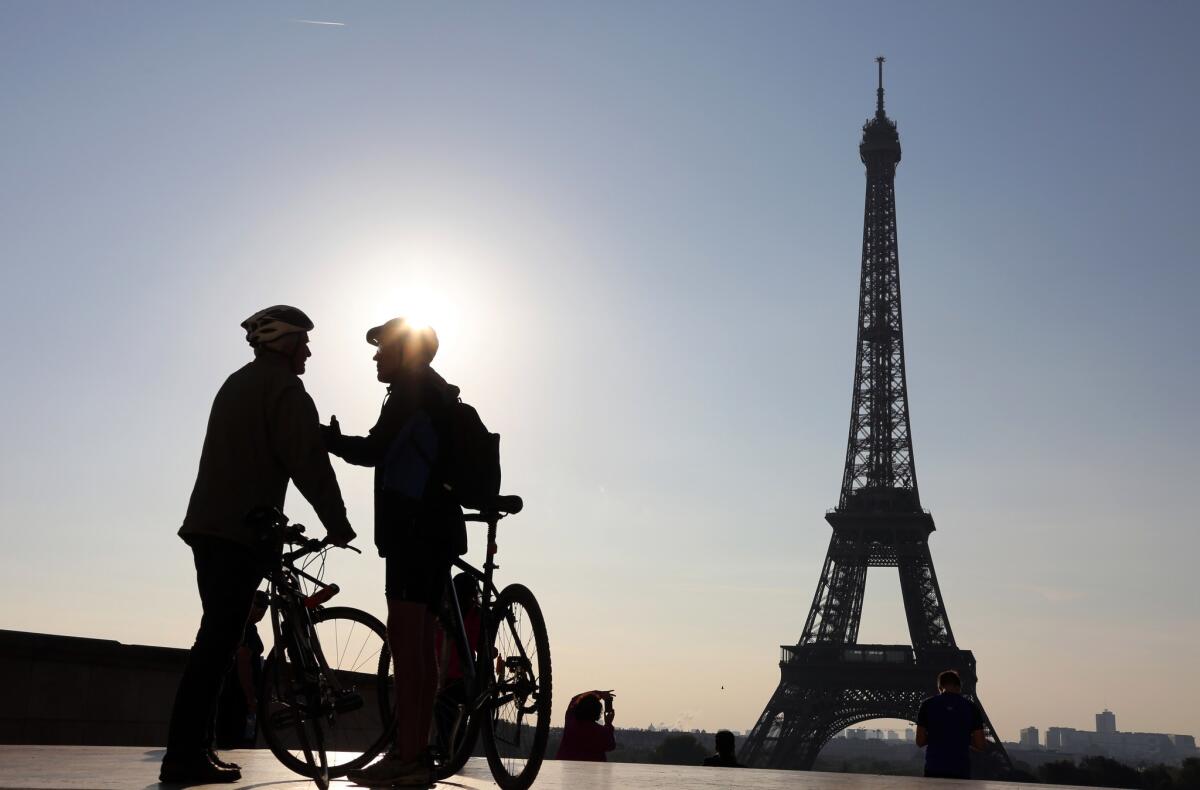Editorial: Fighting climate change globally takes political courage at home, Mayor Garcetti

- Share via
As Mayor Eric Garcetti takes on his latest challenge, he should remember this simple mantra: Think globally, act locally.
Garcetti was elected this week to head the C40 Cities Climate Leadership group, a network of cities around the world committed to concrete action to combat climate change. Congratulations to him. Now, let’s see some action on the ground in Los Angeles.
While she was chair of the group, Paris Mayor Anne Hidalgo used her city as a proving ground for projects that aim to dramatically cut the carbon footprint of the French capital.
Under her leadership, the city banned cars from certain roads to turn them into pedestrian thoroughfares and redesigned streets to replace car lanes with electric trams and protected bikes lanes. The city even closed a highway and turned it into a park and created monthly car-free days in neighborhoods throughout the city. All the while, Paris has been planting trees to vastly expand the city’s urban forest.
Paris’ green revolution has been both wildly popular and incredibly controversial — in part because the transformation has been so swift. But the mayor has been unrelenting in her campaign, showing what is possible when a major city commits to fight climate change on the ground.
Garcetti could do something similar in Los Angeles. He could, for example, build bus-only lanes, protected bike lanes and safer streets. He could set a powerful example for the entire world by starting to transform a city famous for its cars (and the traffic and pollution and greenhouse gases they bring) into one that people can navigate without them.
For the moment, though, Los Angeles is likely to struggle to meet the ambitious targets that Garcetti and his fellow C40 mayors have committed to. The transportation sector is California’s largest source of greenhouse gases, and emissions have risen despite the arrival of vehicles that burn less fuel per mile. Slashing emissions enough to meet the group’s climate goals will require persuading people to drive less. That means building a mass transit system that is fast, convenient and comfortable, and streets that are safe for walking, biking and scootering.
Los Angeles County voters have supported tax hikes to build a better transportation system, but many of the new rail line projects are many years from completion. The need for climate action is now.
With committed leadership from the mayor and other city officials —and inspiration from Paris — Los Angeles could have more high-quality transportation options within a few years. It doesn’t take a lot of money to install bus-only lanes and protected bike lanes. What it does take is a lot of political will to convince skeptical Angelenos that transforming the transportation system is not only vital to slowing the effects of climate change, but it could make Los Angeles a cleaner, greener, more livable city.
More to Read
A cure for the common opinion
Get thought-provoking perspectives with our weekly newsletter.
You may occasionally receive promotional content from the Los Angeles Times.










